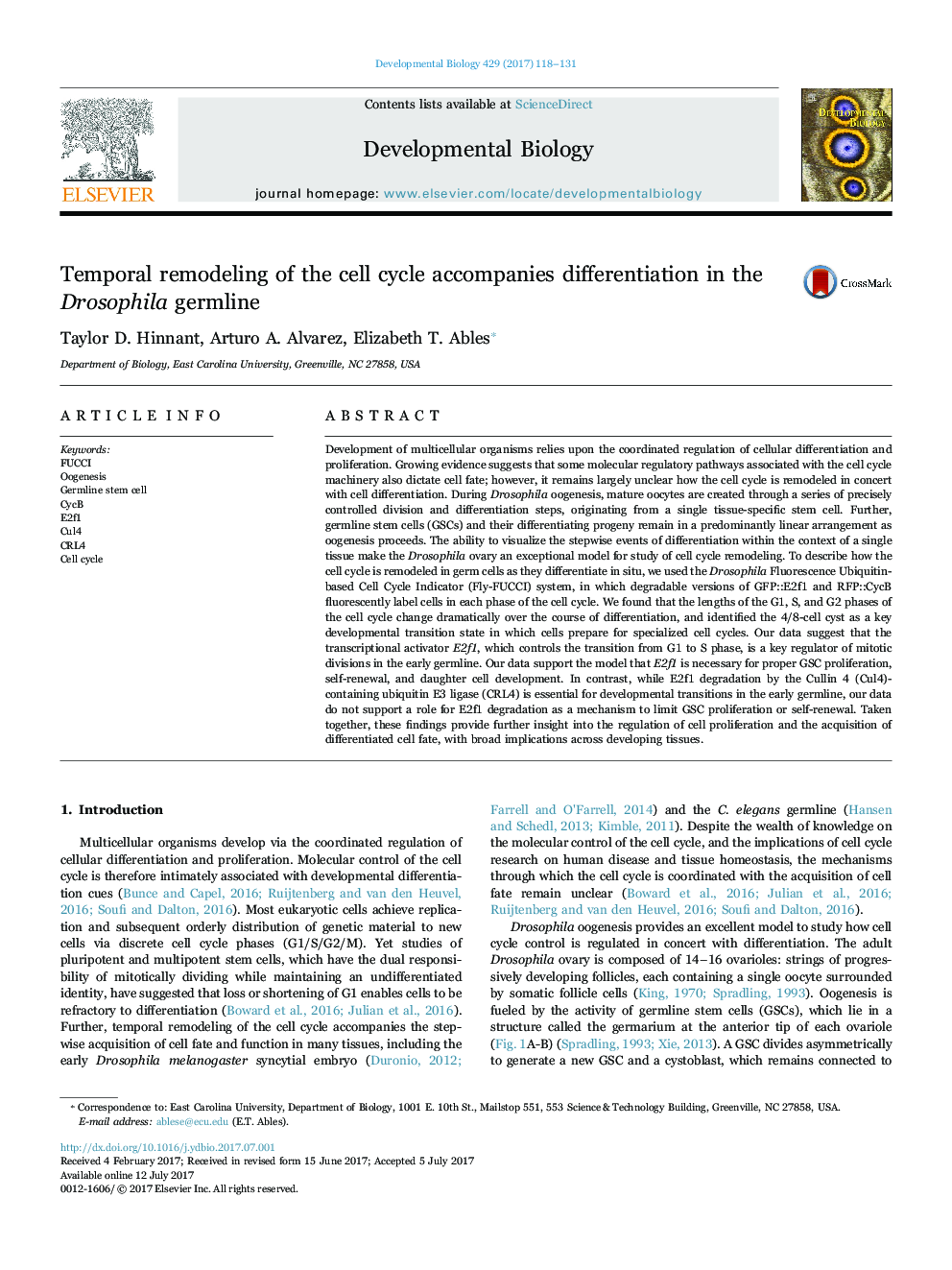| کد مقاله | کد نشریه | سال انتشار | مقاله انگلیسی | نسخه تمام متن |
|---|---|---|---|---|
| 5531895 | 1401819 | 2017 | 14 صفحه PDF | دانلود رایگان |

- Timing of cell cycle phases changes coincident with mitotic exit and differentiation.
- The 4/8-cell cyst stage marks a key developmental transition state.
- E2f1 and Cul4 are essential regulators of the cell cycle in early germ cells.
Development of multicellular organisms relies upon the coordinated regulation of cellular differentiation and proliferation. Growing evidence suggests that some molecular regulatory pathways associated with the cell cycle machinery also dictate cell fate; however, it remains largely unclear how the cell cycle is remodeled in concert with cell differentiation. During Drosophila oogenesis, mature oocytes are created through a series of precisely controlled division and differentiation steps, originating from a single tissue-specific stem cell. Further, germline stem cells (GSCs) and their differentiating progeny remain in a predominantly linear arrangement as oogenesis proceeds. The ability to visualize the stepwise events of differentiation within the context of a single tissue make the Drosophila ovary an exceptional model for study of cell cycle remodeling. To describe how the cell cycle is remodeled in germ cells as they differentiate in situ, we used the Drosophila Fluorescence Ubiquitin-based Cell Cycle Indicator (Fly-FUCCI) system, in which degradable versions of GFP::E2f1 and RFP::CycB fluorescently label cells in each phase of the cell cycle. We found that the lengths of the G1, S, and G2 phases of the cell cycle change dramatically over the course of differentiation, and identified the 4/8-cell cyst as a key developmental transition state in which cells prepare for specialized cell cycles. Our data suggest that the transcriptional activator E2f1, which controls the transition from G1 to S phase, is a key regulator of mitotic divisions in the early germline. Our data support the model that E2f1 is necessary for proper GSC proliferation, self-renewal, and daughter cell development. In contrast, while E2f1 degradation by the Cullin 4 (Cul4)-containing ubiquitin E3 ligase (CRL4) is essential for developmental transitions in the early germline, our data do not support a role for E2f1 degradation as a mechanism to limit GSC proliferation or self-renewal. Taken together, these findings provide further insight into the regulation of cell proliferation and the acquisition of differentiated cell fate, with broad implications across developing tissues.
338
Journal: Developmental Biology - Volume 429, Issue 1, 1 September 2017, Pages 118-131